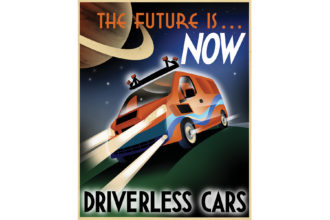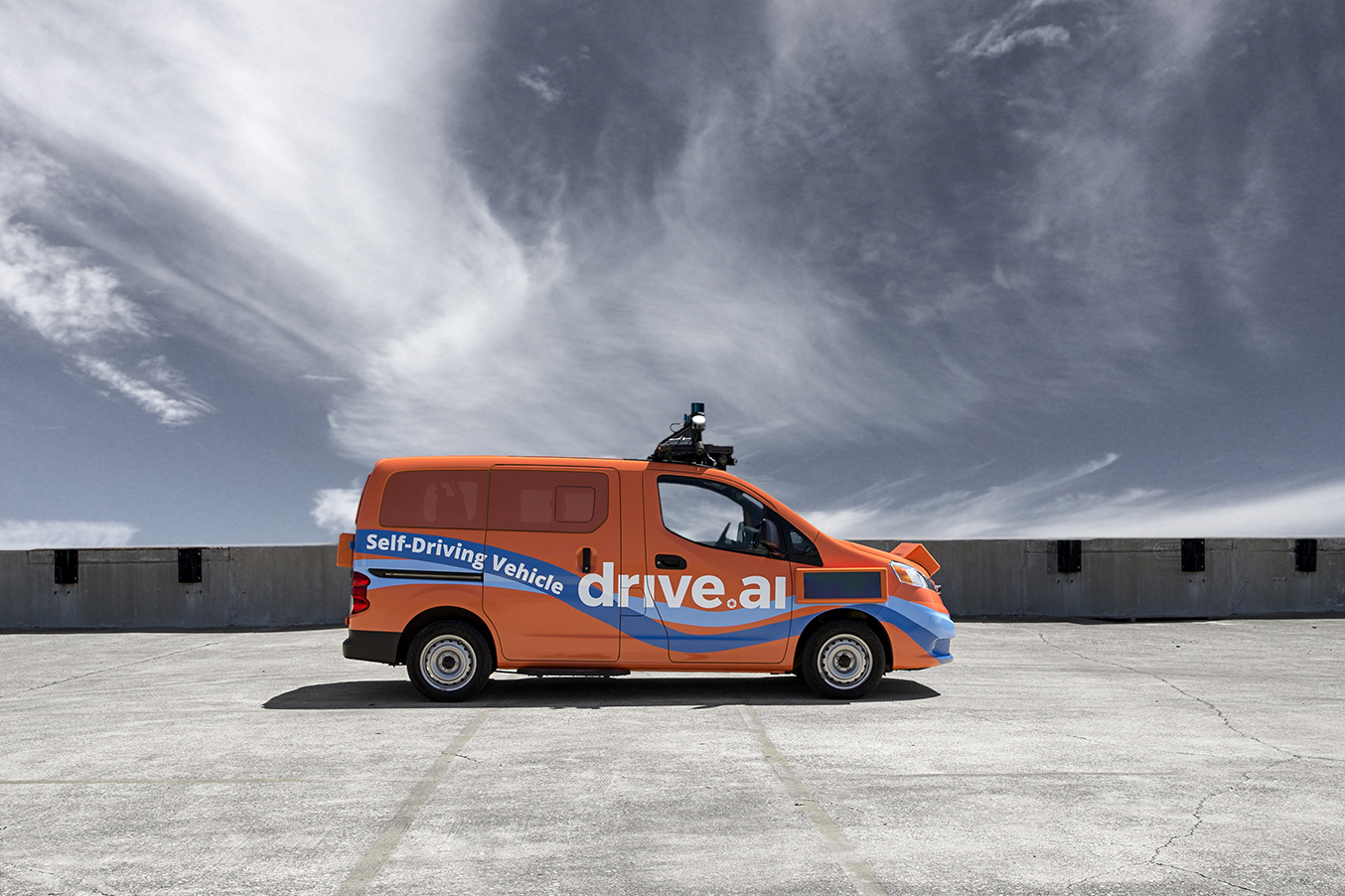The future rolled into Frisco on the year’s first 90-degree day, the May heat radiating off concrete while elected officials sweated through their suits. The dozens of people—politicians and transportation officials, chief executives and PR flacks, a full-on scrum of reporters and photographers—had come to an office park to gawk at one of the first automated vehicles in Texas to drive on a public street.
Created by California start-up Drive.ai, these self-driving cars are modified Nissan NV200 vans painted a bright, highly visible shade of orange with a blue stripe. Passengers summon them using an app. Staffers in an off-site control center monitor a feed from a bulky camera mounted on the roof. During the first few months, a human will sit in the driver’s seat, just in case. For the six-month pilot program, which begins this month, the cars won’t drive in heavy rain. And they’ll travel only in a loop that goes from HALL Park to The Star, dropping off office workers at designated stops. Round trip: 2.8 miles.
The future, as it turns out, is quite cautious. The idea here is to explore the possibility of using automated vehicles to overcome the challenge of the so-called “last mile,” the portion of one’s journey that is too far to walk in the summer heat but is too close to warrant driving to. This portion of Frisco is more notable for its concrete than its trees, making walks to and from restaurants particularly unappealing. It’s a result of a public-private partnership between the city of Frisco; developer Craig Hall’s HALL Group; Frisco Station (which sits on a planned route expansion); the Star; and the Denton County Transportation Authority, which technically administers the pilot program.
Despite all the breathless accounts of the maiden voyage on television that night, this project is in the very early stages. The real work—far less orange, far less sexy—is getting done in Arlington by a tall, mild-mannered bureaucrat named Thomas Bamonte.
“They’re doing it appropriately—very carefully,” says Bamonte, a senior program manager for automated vehicles at the North Central Texas Council of Governments. Part of his job is to encourage cities to plan for innovations and facilitate this development. He notes the importance of cities pursuing 5G technology to help companies better process data from the road. He mentions Waze’s Connected Citizens Program, which allows cities and transportation departments to share construction and traffic data. “The fact that we don’t know for sure what is going to be needed underscores the value of public agencies to be able to share the data they have,” Bamonte says, “so that these vehicles will know things like road closures and work zones.”
 During the last session, the Texas Legislature passed a bill that allows driverless cars to operate on public roads but holds the companies that own them responsible for what happens on the streets. To help ensure the companies are qualified, NCTCOG has paired with Texas’ other COGs to solicit proposals from automated vehicle companies, vet them, and help steer them into settings where they may be beneficial, like universities or entertainment districts. “It’s the only statewide procurement of automated vehicles that I’m aware of,” Bamonte says.
During the last session, the Texas Legislature passed a bill that allows driverless cars to operate on public roads but holds the companies that own them responsible for what happens on the streets. To help ensure the companies are qualified, NCTCOG has paired with Texas’ other COGs to solicit proposals from automated vehicle companies, vet them, and help steer them into settings where they may be beneficial, like universities or entertainment districts. “It’s the only statewide procurement of automated vehicles that I’m aware of,” Bamonte says.
They’re coming, so be on the lookout. In fact, Frisco isn’t the only North Texas city with its own operation. Arlington offers a driverless shuttle system using the city’s paved trails to get folks to and from its entertainment options, like Rangers or Cowboys games.
But Frisco remains the only town in North Texas that’s trying the things out on public right of ways—for now. One of the challenges noted by Drive.ai board member Andrew Ng is that the vans in Frisco won’t be able to wave a pedestrian forward or signal through eye contact to cyclists that they’ve been seen, although digital panels mounted on the cars can transmit messages to folks on two feet. That’s the reason these vans are so ugly. Drive.ai wants them to stick out, so that people treat them as a different category of vehicle, similar to an ambulance or school bus.
Bamonte believes that the more technology improves and the more comfortable the public becomes, the more ways cities will find to use driverless cars. “Ask not what you can do for AVs,” he says. “Ask what AVs can do for you.”
For now, that’s about 50 Frisco workers per day getting shuttled to lunch without moving their cars.






